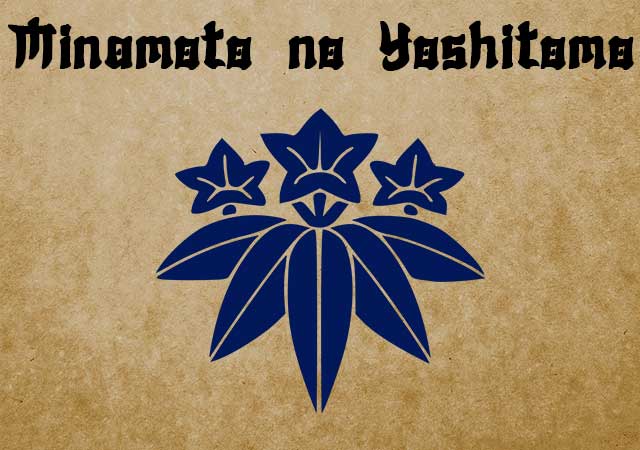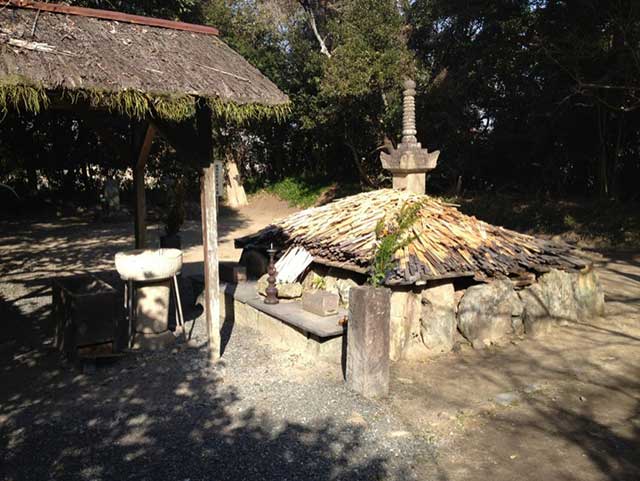
General Minamoto no Yoshitomo served as the head of the Minamoto clan during the Heian Period and was the father of Minamoto no Yoritomo, the founder of the Kamakura Shogunate.
Situated in the tranquil Mihama Cho region on the Chita Peninsula, approximately 35 kilometers south of Nagoya City, stands the Omido-ji Temple, a mid-seventh-century temple of the Shingon Buddhist sect. Also known as Noma Daibo, this ancient temple gained notoriety as the location where the renowned warrior Minamoto no Yoshitomo, father of the first Kamakura Shogun, Yoritomo, and Yoshitsune, met his demise.
In 1159, the once-close Minamoto and Taira clans had become bitter enemies following Yoshitomo's defeat in the Heiji Rebellion. Fleeing the capital, Kyoto, Yoshitomo sought refuge in modern-day Aichi Prefecture and stayed in the village of Noma at the residence of Osada Tadamune. Unfortunately, one of his retainers' fathers-in-law betrayed Yoshitomo for a reward, leading to a fatal attack on him during a bath.
Caught defenseless and unarmed, Yoshitomo's last words, uttered while surrounded by enemies, were "If I had even a wooden sword,..." before he was slain. His head was taken and washed in a nearby pond known as Chi No Ike, or Pond of Blood. The remnants of the bathhouse still exist, and the gravesite, enclosed by a low stone wall, is situated alongside the temple's main hall.
Visitors leave offerings of wooden swords at the noble warriors' grave, believing that dedicating a sword will lead to answered prayers. Consequently, the grave is adorned with various wooden swords.

The main worship hall, Kyakuden, at Noma Daibo is designated an Important Cultural Property, while the Bonsho Prayer Hall is a Prefectural Cultural asset. Of particular note is the entranceway to the Prayer Hall, which was once part of the reception hall at Momoyama Castle.
Between the Kyakuden and Bonsho halls stand a gate erected in 1190 by Yoritomo in memory of his slain father and a drum tower built by the Fifth Kamakura Shogun, Fujiwara Yoritsugu, in honor of his ancestor.
Noma Daibo maintains a somewhat eerie ambiance as the site where historical events unfolded. Not much appears to have changed in the approximately 860 years since Minamoto No Yoshitomo sought sanctuary here, only to tragically lose his life.
See also
-
Yamagata Masakage

Masakage was one of Takeda Shingen’s most loyal and capable commanders. He was included in the famous list of the “Twenty-Four Generals of Takeda Shingen” and also belonged to the inner circle of four especially trusted warlords known as the Shitennō.
-
Yagyu Munenori

Yagyū Munenori began his service under Tokugawa Ieyasu while his father, Yagyū Muneyoshi, was still at his side. In 1600, Munenori took part in the decisive Battle of Sekigahara. As early as 1601, he was appointed a kenjutsu instructor to Tokugawa Hidetada, Ieyasu’s son, who later became the second shogun of the Tokugawa clan.
-
Yagyu Muneyoshi

A samurai from Yamato Province, he was born into a family that had been defeated in its struggle against the Tsutsui clan. Muneyoshi first took part in battle at the age of sixteen. Due to circumstances beyond his control, he was forced to enter the service of the Tsutsui house and later served Miyoshi Tōkei. He subsequently came under the command of Matsunaga Hisahide and in time became a vassal first of Oda and later of Toyotomi.
-
Endo Naozune

Naozune served under Azai Nagamasa and was one of the clan’s leading vassals, renowned for his bravery and determination. He accompanied Nagamasa during his first meeting with Oda Nobunaga and at that time asked for permission to kill Nobunaga, fearing him as an extremely dangerous man; however, Nagamasa did not grant this request.
-
Hosokawa Sumimoto

Sumimoto came from the Hosokawa clan: he was the biological son of Hosokawa Yoshiharu and at the same time the adopted son of Hosokawa Masamoto, the heir of Hosokawa Katsumoto, one of the principal instigators of the Ōnin War. Masamoto was homosexual, never married, and had no children of his own. At first he adopted Sumiyuki, a scion of the aristocratic Kujō family, but this choice provoked dissatisfaction and sharp criticism from the senior vassals of the Hosokawa house. As a result, Masamoto changed his decision and proclaimed Sumimoto as his heir, a representative of a collateral branch of the Hosokawa clan that had long been based in Awa Province on the island of Shikoku. Almost immediately after this, the boy became entangled in a complex and bitter web of political intrigue.
-
Honda Masanobu

Masanobu initially belonged to the retinue of Tokugawa Ieyasu, but later entered the service of Sakai Shōgen, a daimyo and priest from Ueno. This shift automatically made him an enemy of Ieyasu, who was engaged in conflict with the Ikkō-ikki movement in Mikawa Province. After the Ikkō-ikki were defeated in 1564, Masanobu was forced to flee, but in time he returned and once again entered Ieyasu’s service. He did not gain fame as a military commander due to a wound sustained in his youth; nevertheless, over the following fifty years he consistently remained loyal to Ieyasu.
-
Honda Masazumi

Masazumi was the eldest son of Honda Masanobu. From a young age, he served Tokugawa Ieyasu alongside his father, taking part in the affairs of the Tokugawa house and gradually gaining experience in both military and administrative matters. At the decisive Battle of Sekigahara in 1600, Masazumi was part of the core Tokugawa forces, a clear sign of the high level of trust Ieyasu placed in him. After the campaign ended, he was given a highly sensitive assignment—serving in the guard of the defeated Ishida Mitsunari, one of Tokugawa’s principal enemies—an obligation that required exceptional reliability and caution.
-
Hojo Shigetoki

Hōjō Shigetoki, the third son of Hōjō Yoshitoki, was still very young—only five years old—when his grandfather Tokimasa became the first member of the Hōjō clan to assume the position of shogunal regent.

